Position Optimisation with AB02 2025
Posted by Ken Ballhause on 11th Feb 2025
Aerobar Two (AB02) stands for position optimisation. Well, it doesn't, but that's what AB02 is all about. So how can you use AB02 to better optimise your time trial position and take advantage of the features our latest aerobar solution offers?
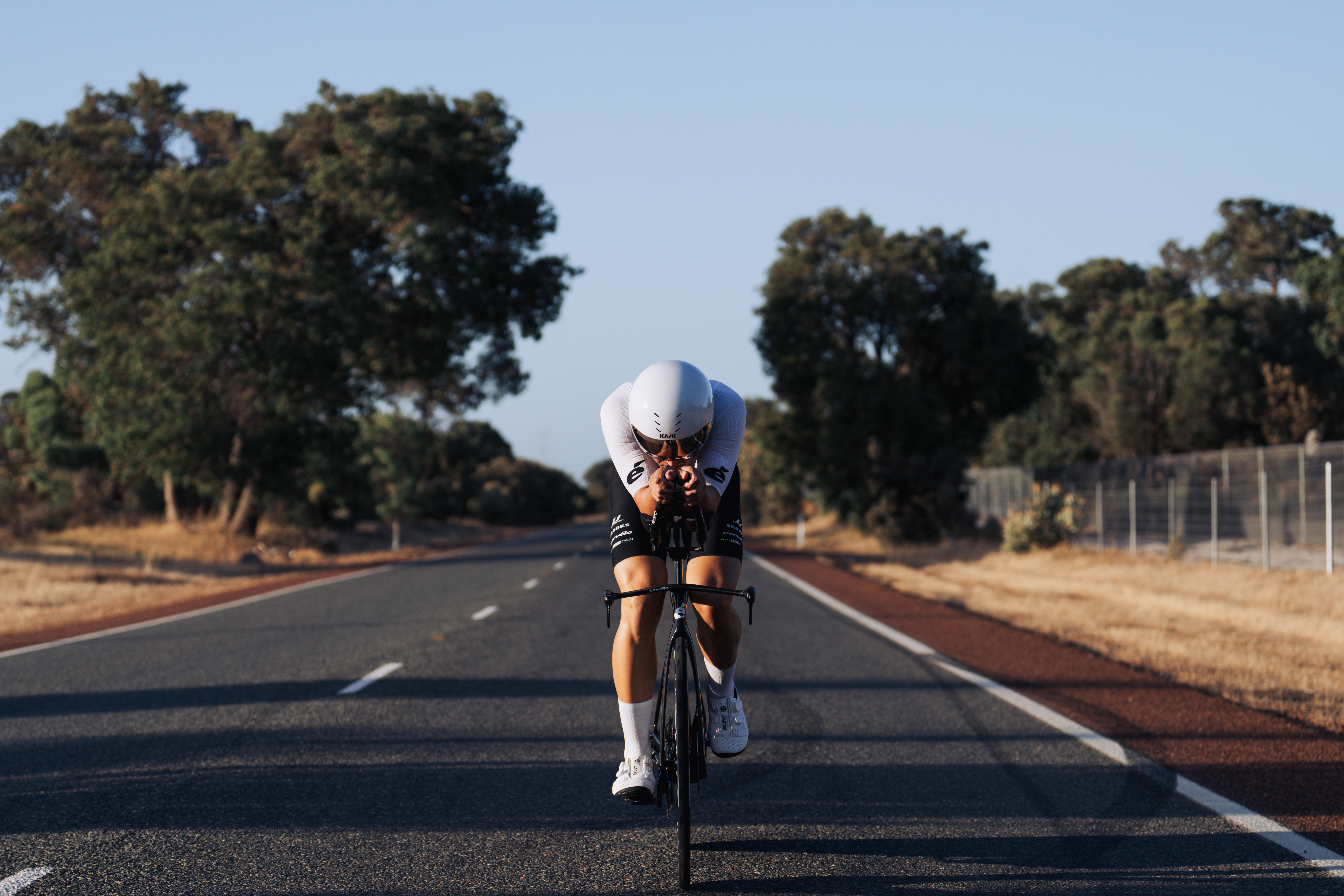
Let’s start with why position optimisation is so important. At relevant race speeds, 90% of resistance to forward motion is aerodynamic drag. Of that, more than 70% comes from airflow over the body of the cyclist and less than 30% comes from airflow over the bike. The aerodynamic properties of equipment are important, but the primary focus for every athlete should be the quality of their TT position. That's because it yields the greatest potential for gains and when done correctly, also improves comfort.
Position optimisation is where Sync Ergonomics started and track aero testing had long been our preferred method of evaluating aero performance. Thanks to its ergonomic benefits, the high-hands time trial position was always of interest to us and as we have been able to demonstrate, it’s also of aero benefit. In this example, performance and comfort outcomes can both be achieved through improvement in cockpit components.
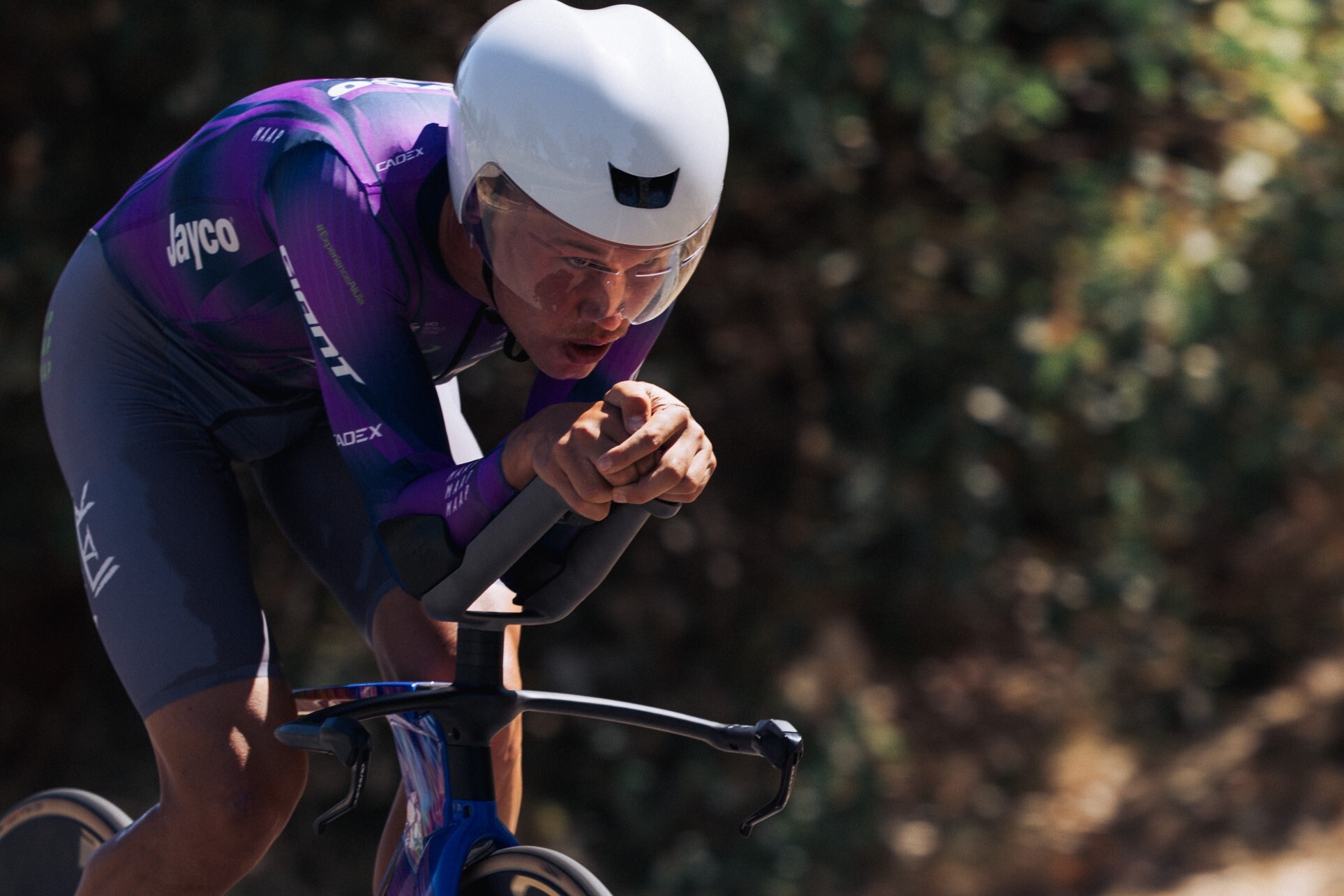
While angulation is the hallmark characteristic of every Sync Ergonomics cockpit, let's start with the key differences between Aerobar One and Aerobar Two. Time trial cockpit configuration starts with having the correct pad stack height (to achieve your desired torso angle), and pad reach (to achieve your optimal shoulder joint angle).
AB02 takes over from AB01, where the simpler AB01 is limited by the bike's original extension clamps, spacers and hardware. Being a more comprehensive system, AB02 has more options for both stack height and arm cup reach, allowing the user to achieve more height and more length to the arm cups. Both of which are common requirements in position optimisation.
Pad Stack
The height of the arm cups (pad stack) manipulates torso angle. At one end of the spectrum this offers improvements in aero performance, at the other, going too low can compromise your power output. It goes without saying, you want to get the balance just right.
As most understand, torso angle is critical for achieving optimal aero performance. Contrary to popular belief, there isn’t much difference between the torso angle for TT and the torso angle for Triathlon, and the reason is pretty simple. At the tipping point, it is an athlete's power that is being compromised and it doesn’t matter if it’s 180 km or 4 km, you can not compromise on the thing that is driving you forward (much).
Measured as the angle from hip joint to shoulder joint, over horizontal, lower is generally better, but there is a lot that feeds into achieving the individual-specific best angle (saddle choice, saddle position, crank length, athlete-specific health factors).
Suggested TT - 15 degrees (+/-)
Suggested Tri - 20 degrees (+/-)
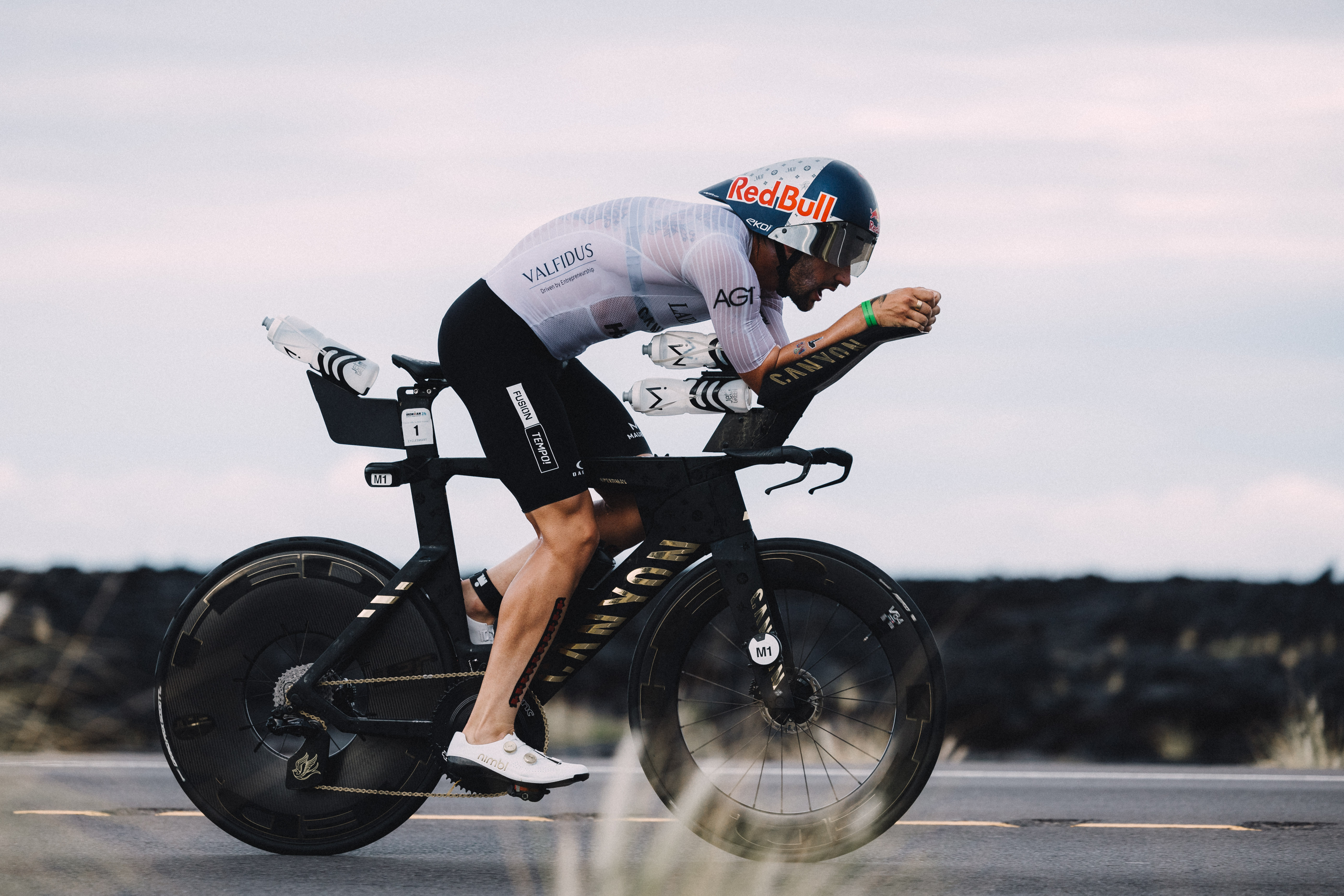
In working on these, you want to remember two critical things. Firstly, you should be able to keep your shoulders "tucked behind your head" (retracted shoulder blades). If you ever have the sensation that you are “reaching” for your arm cups and losing your “tuck” then you know that you probably need to explore higher arm cup stack height. And secondly, don't compromise your power output with an excessively low cup position. If your power is not very closely matched to a similar effort on the road bike, you know you need to explore a higher cup position.
In finding the optimal arm cup stack (and torso angle), crank length, saddle choice and saddle position are your enablers, allowing you to maximise cockpit setup and aero gains (comfortably).
Pad Reach
The forward position of the arm cups (pad reach) manipulates shoulder joint angle and most critically, the biomechanical stability of your TT position. Going short can yield aero gains for some individuals. Likewise going long can yield aero gains in certain situations. But it is important to remember that each comes with compromise, both require more input from the athlete to maintain in position as they are less biomechanically stable.
Suggested shoulder joint angle - 80 degrees (+/-)
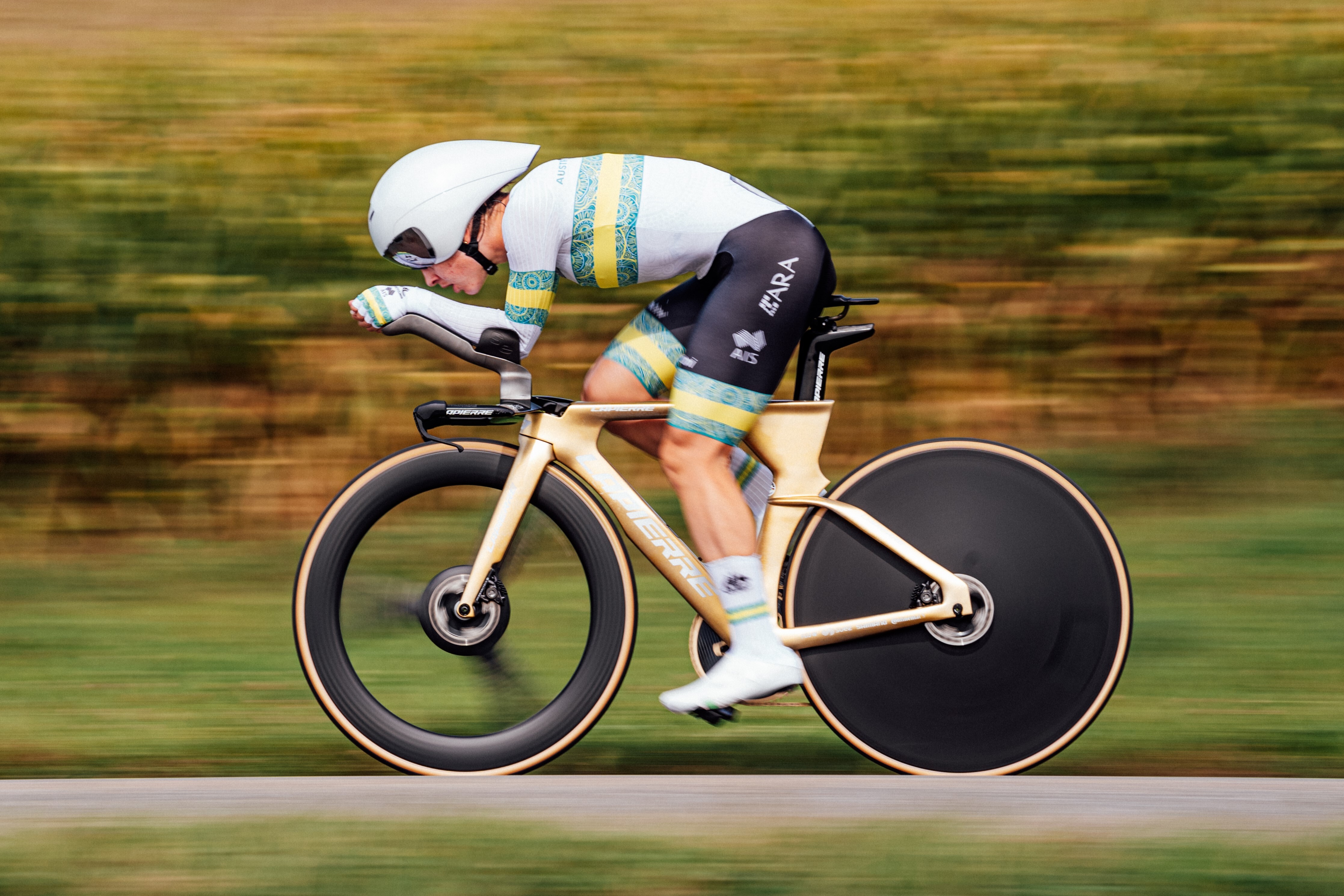
Finding a length that delivers natural biomechanical stability should always be the starting point. An excessively long position will be noticeable in fatigue / overuse of your latissimus dorsi muscle, as the main muscle responsible for preventing you from falling deeper into shoulder forward flexion. An excessively short position will be problematic to the front of the shoulder, with your shoulder flexors overworking to maintain your position
Pad reach is a hot topic right now. UCI positions are trending shorter, Triathlon positions are trending longer. Our suggestion for each discipline is to start with a biomechanically stable position and with the aid of aero testing, work out where a small gain can be found (shorter or longer), without compromising your ability to maintain your best aero techniques.
AB02 for Centre Stack Bikes
For Centre Stack bikes, our adapter starts at the top surface of the bike's original spacer. Our Centre Stack solutions require the original spacer stack components for adjustment to pad stack.
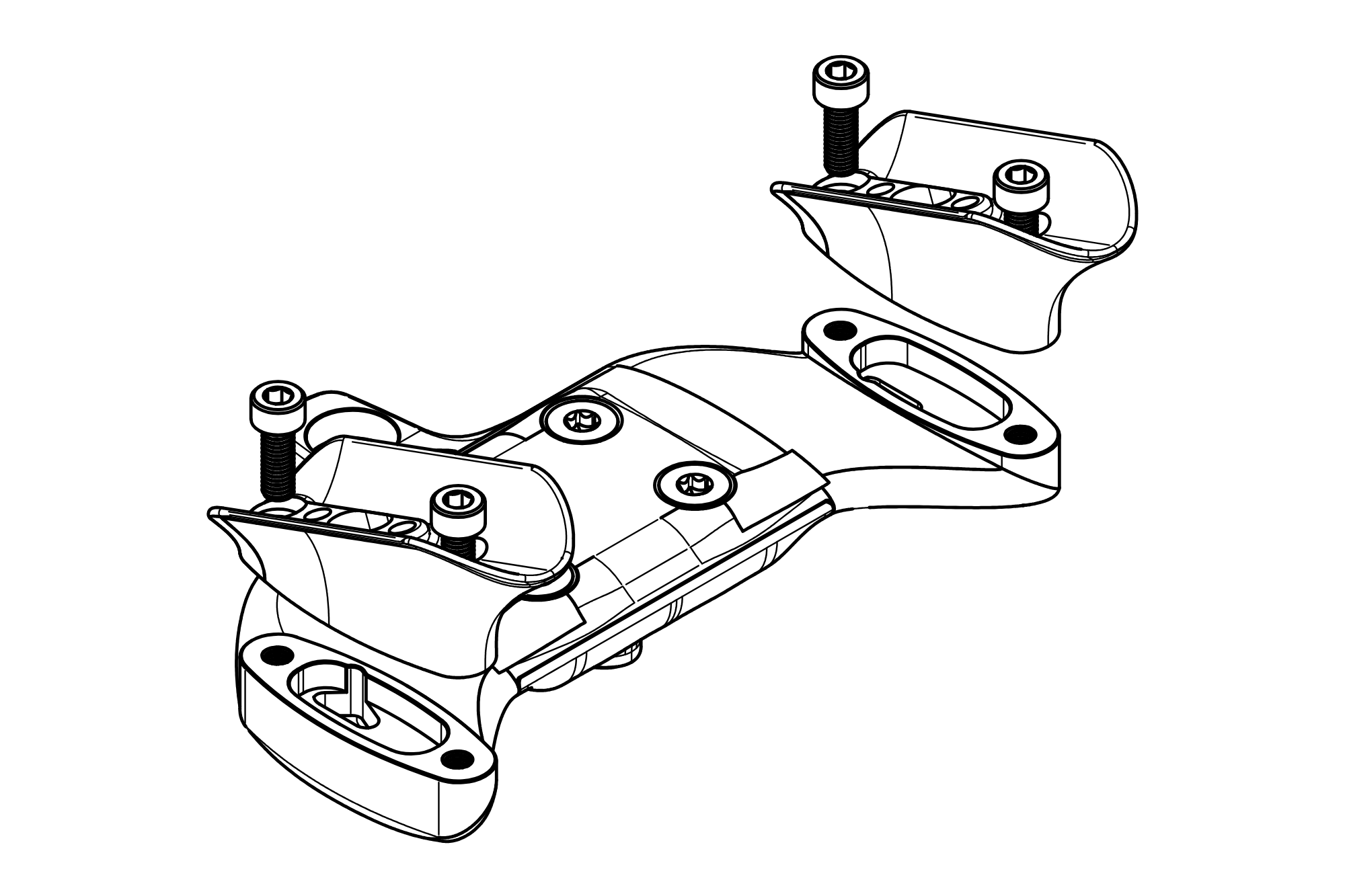
Our Centre Stack top plates are available in Neutral (0 mm offset), 20 mm offset, 30 mm offset (special order) and 40 mm offset (special order). Coming in a standard 125 mm width, these offset options allow for achieving the optimal arm cup reach.
AB02 for Dual Stack Bikes
For Dual Stack bikes, our adapters start at the basebar. This allows us to deliver a consistent 125 mm width of our extension clamps. The exception here is the Colnago TT1, which is spaced at 115 mm (C-C).
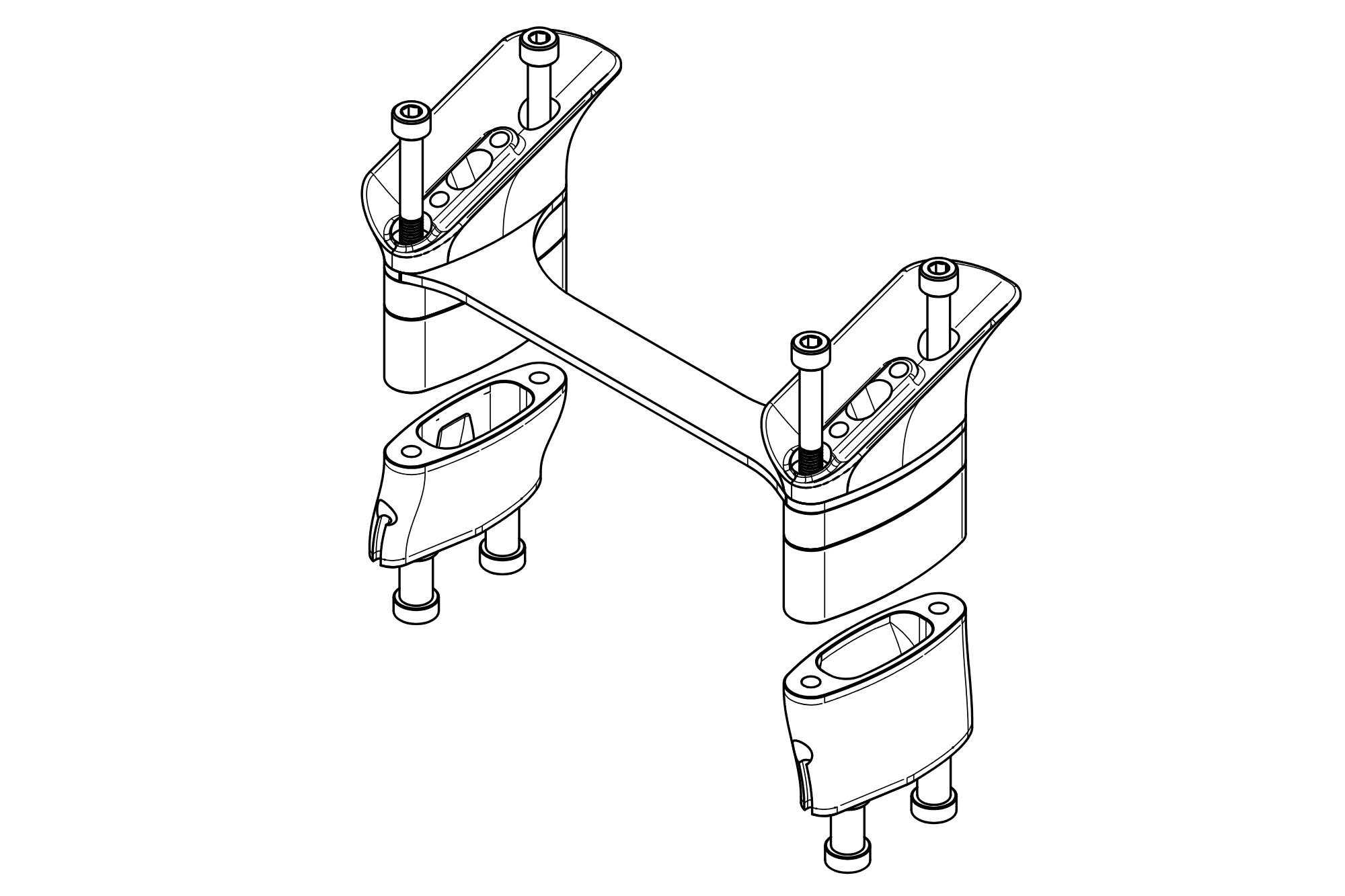
For 2025 we have two spacer kits available for adjustment of pad stack height:
Kit A: 30 mm of spacers
This comes standard with all Dual Stack systems.
Kit B: 60 mm of spacers
Optional extra, available with all Dual Stack systems, except the Canyon H48/H49.
Forearm Angulation
With our 2025 cockpits, we deal with angulation via the component we call the extension clamp cradle. This delivers fixed angulation of either 15 or 20 degrees, chosen during purchase. Unless you are limited by the UCI rules (Cat 1 requires 15 degrees to achieve 100 mm height), the 20 degree option is suggested as the default.
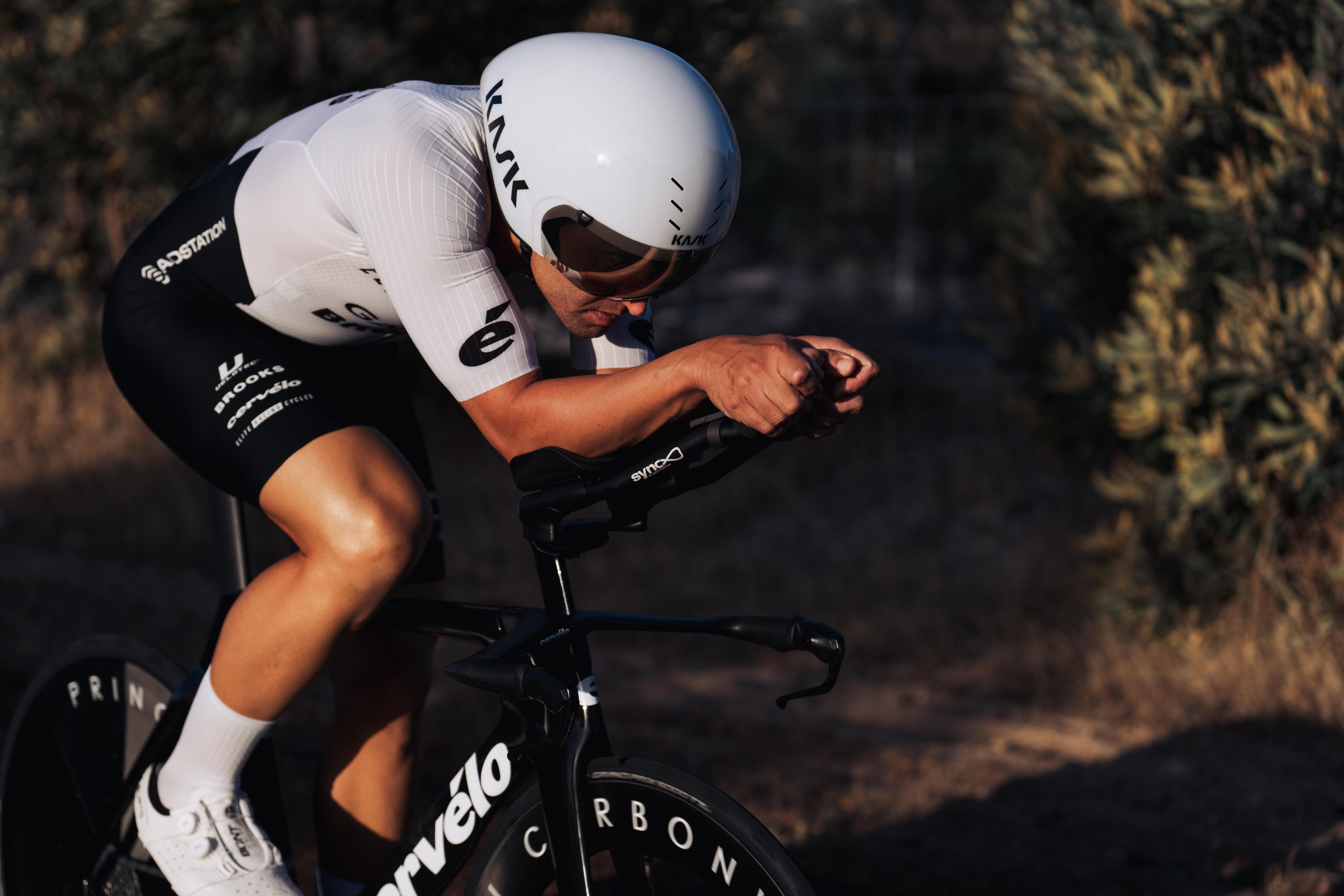
Firstly, angulation is important, because it creates a more stable connection with the bike. With your centre of mass so far forward on a TT bike, you are always "slipping forward" and angulation is the ergonomic strategy we use for dealing with this. Increased angulation also assists with allowing for exploration of more arm cup reach, again, thanks to the natural stability that comes from higher angulation.
Secondly, the combination of pad stack and forearm angulation "close off" the space between the forearms and the face. This is where a fair chunk of the aero gains of a high hands position come from.
Arm Cup Width
This is the third benefit of forearm angulation, it allows the user the ability to run a much narrower arm cup setup, without loss of comfort or control.
We suggest running the narrowest arm cup position that can be tolerated. Over time and with improvements in skill, comfort and/or flexibility, we suggest that the width of the arm cups is further explored (narrowed), for improvements in aero performance.
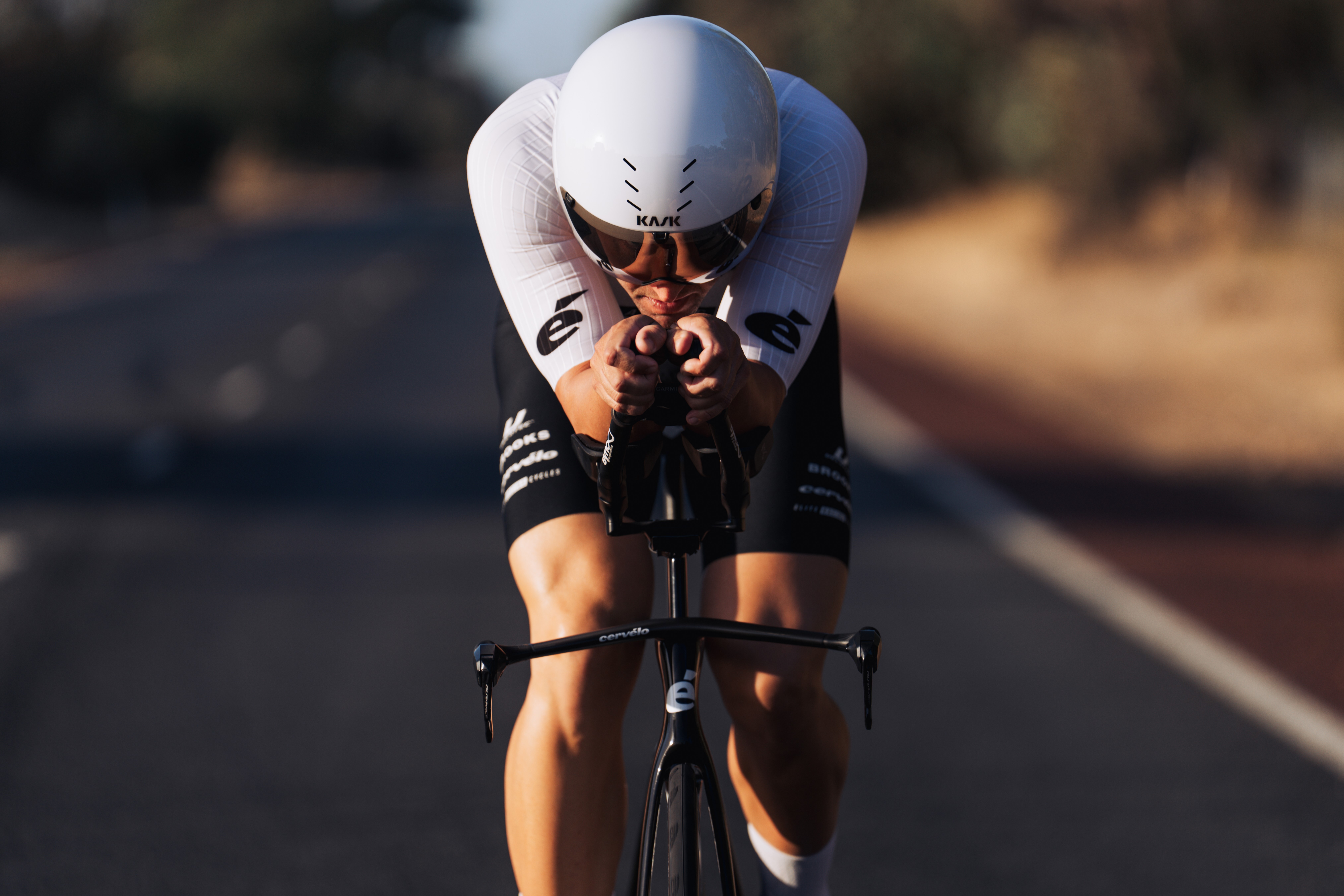
Extension Length
This one is relatively simple and relates to the length of your forearm. For AB02 we have two extension lengths available.
Medium: Suitable for forearm length below 280 mm
Long: Suitable for forearm length greater than 280 mm
More can be seen in our Technical Resources.
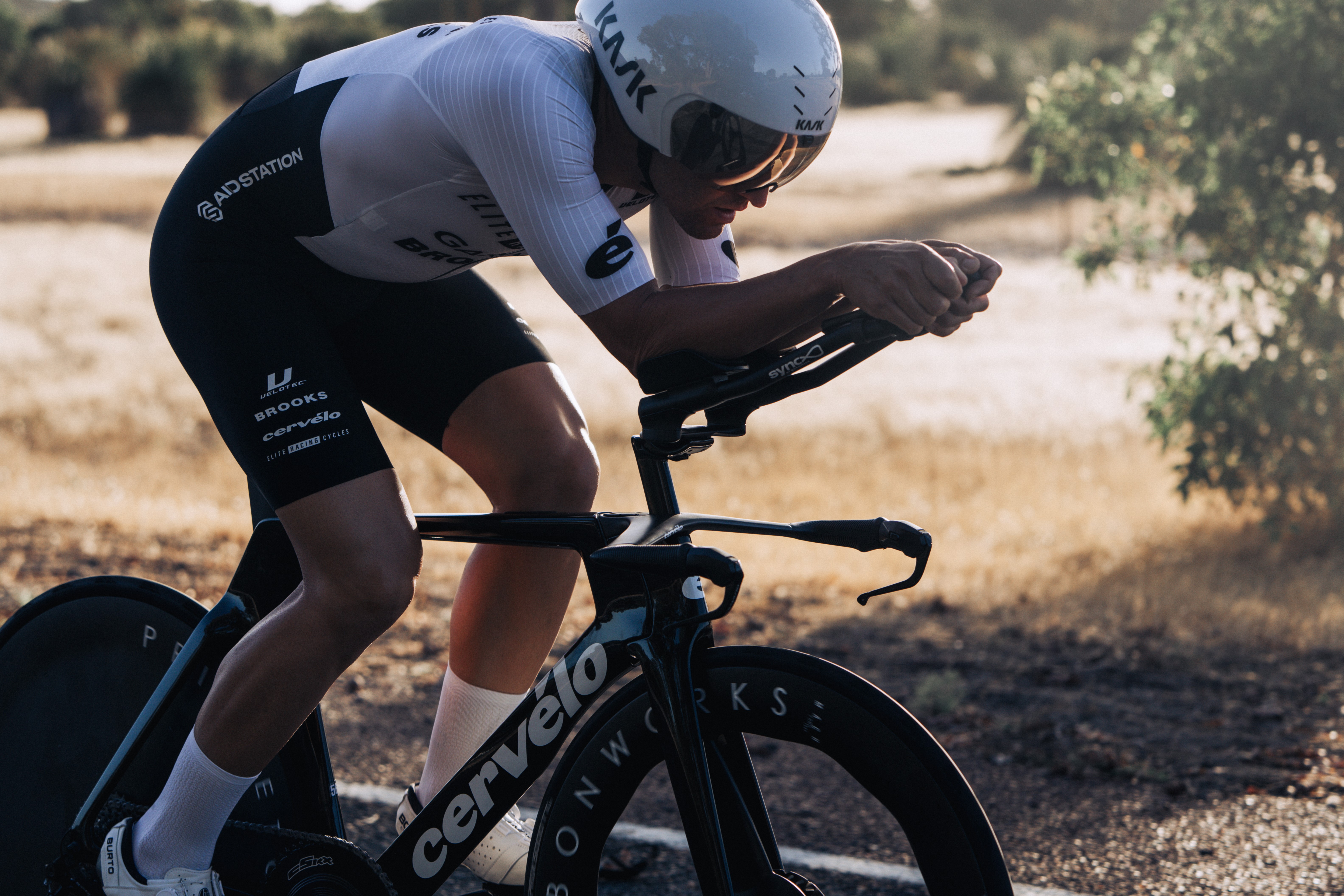
Conclusion
For anyone seeking performance gains on their TT bike, be it for UCI competition or Triathlon, your TT position is the starting point. With more than 70% of the aero drag coming from airflow over your body, this is the first and primary consideration in going faster. Thanks to ergonomic considerations, a more aero position can also be a more comfortable position.
Aerobar Two (AB02) allows for more options with position optimisation, in the critical areas of pad stack, pad reach, forearm angulation, arm cup width and extension length. AB02 was designed as a cost-effective means of exploring and achieving an optimal TT position, on modern-day TT bikes, where standard OE cockpits didn’t cater for requirements.

